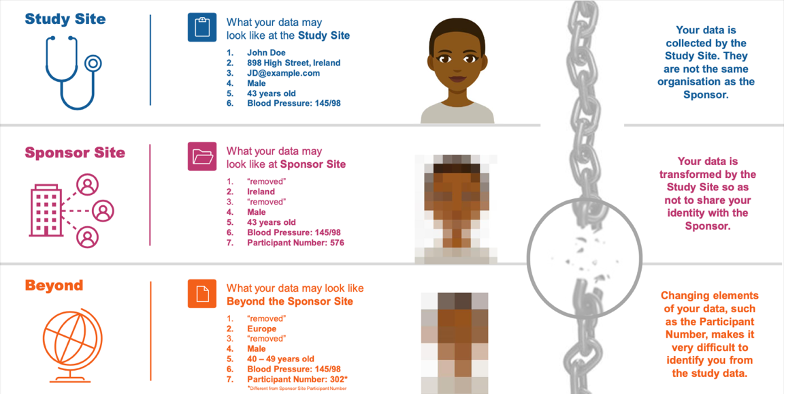A technique that involves replacing personal data with a code or pseudonym. This code is unique to each individual but doesn’t reveal their actual identity. It’s like giving each person a secret code name, so their personal information remains private. For example, instead of using your full name in a clinical trial, pseudonymisation would assign you a code like ‘Patient123.’ This helps protect your privacy while still allowing researchers to work with your data.
What differs pseudonymisation from anonymisation is that the latter consists of removing personal identifiers, aggregating data, or processing this data in a way that it can no longer be related to an identified or identifiable individual. Unlike anonymised data, pseudonymised data qualifies as personal data under the General Data Protection Regulation (GDPR). Therefore, the distinction between these two concepts should be preserved.
Adapted from PHUSE Terminology Harmonisation in Data Sharing and Disclosure Terms and Definitions (version 2)
https://advance.phuse.global/pages/viewpage.action?pageId=10878987

Courtesy of TransCelerate project (https://www.transceleratebiopharmainc.com)



